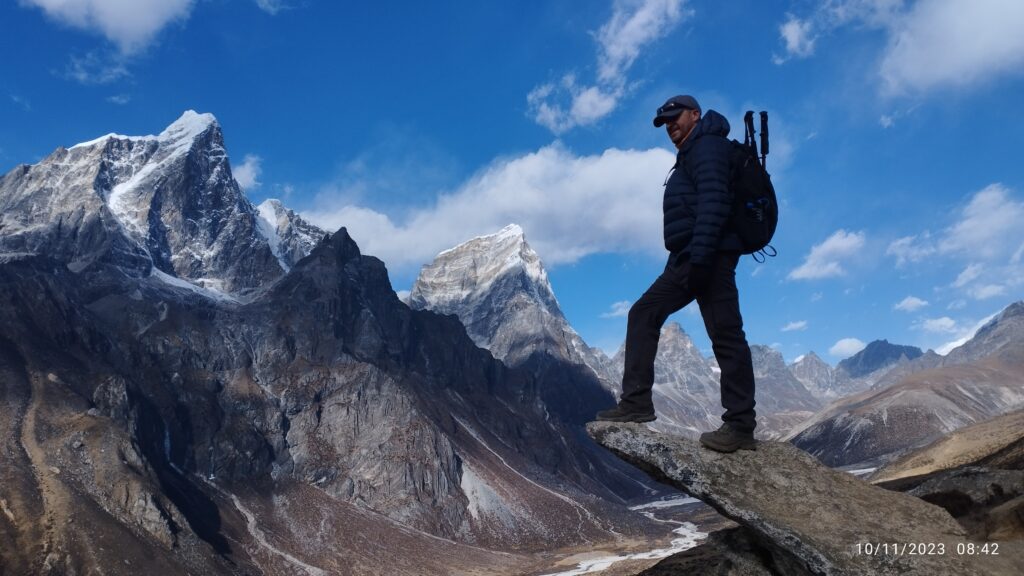
The Annapurna Circuit trek is a legendary long-distance hike that lies at the heart of theNepalese mountain ranges. This classic trek is considered the best within the Annapurna Region, typically taking 11 to 15 days to complete. Starting from Jagat, the trail winds through diverse landscapes, from subtropical forests to the high Thorang La Pass (5,416m).
Hikers will be amazed by the dramatic deep gorges, Buddhist stupas, and the Annapurna Massif, which includes giants like Dhaulagiri, Annapurna, Manaslu, and several other peaks above 6,000-8,000m. The trek also passes through charming villages representing Hindu, Gurung, and Tibetan cultures.
History
The Annapurna area was opened for adventure in 1977. Initially, the trek began at Dhumre Market Town, located on the Kathmandu—Pokhara highway, and took about 23 days. Nowadays, roads have made parts of the trek easier and faster (around 15 days), increasing the popularity of mountain biking in the Muktinath and Jomsom areas. However, trekkers still prefer to experience the beauty of Thorong La Pass on foot.

Annapurna Circuit Trek Overview
- Walking Distance: 110 km- 125 km (starting from Jagat to Pokhara)
- Days: 12-15 (based on the itinerary you choose)
- Guide: Compulsory
- Travel Insurance: Compulsory
- Permits: TIMS card and ACAP
- Start Point: Jagat/Bhulbule
- Final Point: Pokhara/Kathmandu
- Highest Elevation: Thorong La Pass (5,416 m/17,765 ft)
- Accommodation: Hotel/Guest houses/Teahouse
- Food: Nepali, Indian, and Western food
Top 7 Essential Information for Annapurna Circuit Trek
1. Think About the Seasonal Conditions
Choosing the right time of year for the Annapurna Circuit Trek depends on your preferences. Consider your physical fitness level, experience, crowd levels, and the weather. The best times are during spring and autumn (peak seasons). For those seeking extra adventure, the trek is also possible during winter, monsoon, and summer.
2. Permits
- ACAP: Annapurna Conservation Area Permit
- TIMS: Trekkers Information Management System Card
Both the ACAP and TIMS cards are required for the Annapurna Circuit trek. Permit fees for citizens from the SAARC region and Nepal are NPR 1,000, whereas for others, they are NPR 3,000. Additionally, there is a TIMS card cost of NPR 2,000. These permits can be issued by authorized organizations of the Nepal Tourism Board in Kathmandu or Pokhara.
3. Choose the Correct Gear
Carrying appropriate equipment is essential for a comfortable and safe trek. Wear strong and durable hiking boots suitable for all terrains. Prepare for sudden weather changes by choosing lightweight, fast-drying fabrics, a thick insulated jacket for colder climates, a waterproof jacket, and a wool hat or fleece cap. Select a reliable backpack with a cover and bring convenient items like a first aid kit, headlamps, and sunglasses.
4. Meals on the Annapurna Circuit Trek
While trekking, avoid high-protein and unhealthy foods and restrict alcohol and tobacco. Drink more than three liters of water daily to stay hydrated and avoid altitude sickness. Enjoy popular local dishes like Momos (Nepalese dumplings), Thukpa (vegetable soup with noodles), and Dhal Bhat (a traditional meal). Western foods like pasta, pizza, and spaghetti are also available.Lorem ipsum dolor sit amet, consectetur adipiscing elit. Ut elit tellus, luctus nec ullamcorper mattis, pulvinar dapibus leo.
5. Electricity and Charging Facilities
Teahouses and guesthouses along the trek have electricity or solar power for charging electronic devices. However, the power supply is limited and weather-dependent, and charges for device charging may vary. Nepal uses three plug types: C, D, and M, with a 230 V supply voltage at 50 Hz. A universal adapter is recommended.
6. Transportation to/from Kathmandu
The trek typically starts with a private vehicle drive from Kathmandu to Jagat, passing Beshishar, which takes about 8-9 hours. Before concluding the trek, there is a flight from Jomsom to Pokhara, taking about 20 minutes, followed by a return trip to Kathmandu by flight or bus.
7. Accommodation
In Kathmandu and Pokhara, you will find well-facilitated hotels and lodges. During the trek, accommodation is usually in small family-run teahouses and guesthouses with basic amenities. Facilities vary, so bringing a sleeping bag is recommended.

Summary of Annapurna Circuit Trek
- Daily Activities: Walking from one place to another, typically lasting 4-9 hours and covering 15-22 km daily.
- Route: Jagat, Dharapani, Pisang, Manang, Yak Kharka, Throng Phedi, Muktinath via Thorong La Pass.
- Altitude: Reaches up to 17,786 ft at Thorong La Pass, one of the highest passes in the world.
- Landscape: From subtropical jungle to alpine and arid desert, with diverse flora and fauna.
- Scenery: Breathtaking Himalayan panorama, including peaks like Annapurna, Dhaulagiri, and Manaslu.
- Local Culture: Experience the customs and culture of local communities.
- Accommodation: Stay in teahouses/guesthouses with basic comforts.
- Villages: Explore Jomsom, Mustang, and the Muktinath temple.
Offering Options to Annapurna Circuit Trek
For a family-friendly and less challenging hike, consider the Annapurna Base Camp Trek or the Ghorepani Family Trek. For a more iconic Himalayan experience, the Everest Base Camp Trek, which ends at the foot of Mount Everest, is a great option.
Final Thoughts: Annapurna Circuit Trek
The Annapurna Circuit is one of Nepal’s best trekking routes, offering a breathtaking mountain panorama, a glimpse into local culture, and a chance to test your endurance. It promises a stunning experience, reaching the Thorong La Pass and witnessing the majestic views of the Dhaulagiri and Annapurna mountains.


